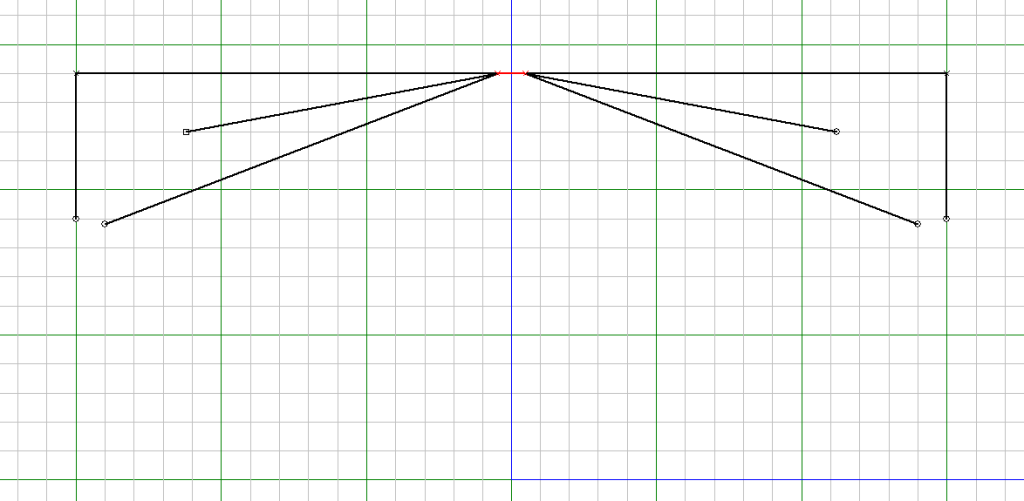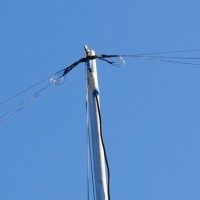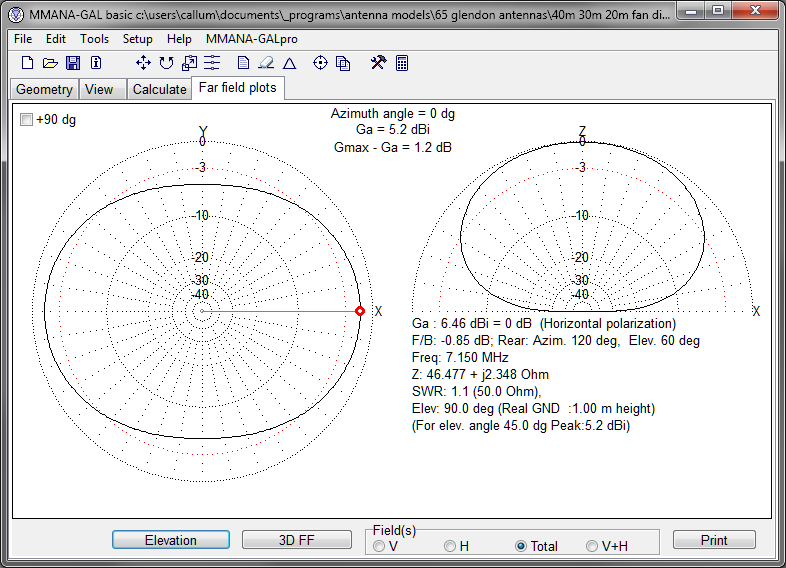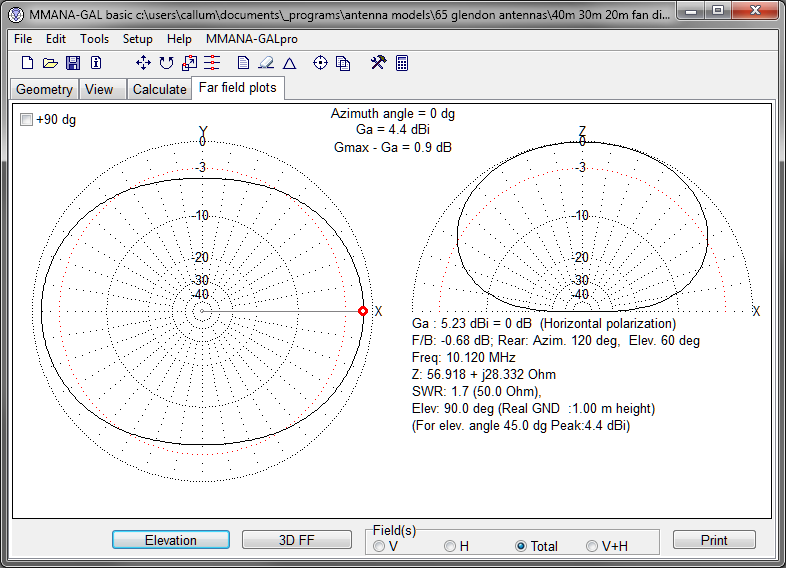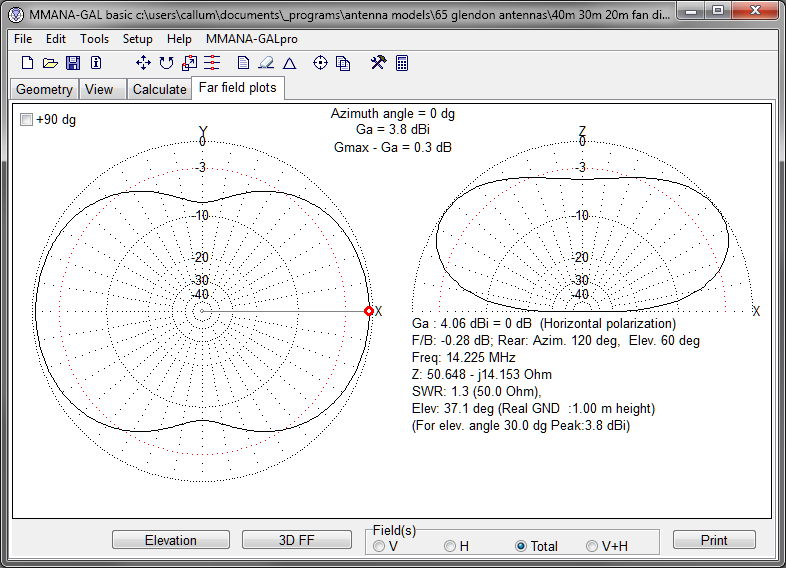One of my aerials has just come down in the wind, a 40m compact dipole arranged as an inverted V with the ends coming down as far as the 6 feet fence height.
My garden is about 15m wide (actually it’s 51 feet wide, so a whisker over) however it’s too small to fit in full-sized flat-top dipole but an inverted V works well. Whilst you are at it, why not add in elements for 30m and 20m and have three bands on one feeder?
I have designed this antenna to be a flat top with droopy legs. The centre will be held up with a very sturdy aluminium scaffold pole with a 4.6m sailboard mast sleeved over the top. The aluminium mast will cross-bolt to an already installed steel scaffold bar already concreted in the ground. Bottom line is that I should achieve around 10m in height (30 feet or so).
Do not skimp on the mast. All those wires will drag the mast around in very severe winds. We recently saw gusts of over 50mph here near Birmingham the other night and my Spiderbeam 12m pole snapped. I was only using the first 7m of this pole and even so, the wind caught not only the pole but also the balun, the coax and the antenna wire to pull it to such an extent, it broke. Hence me going for aluminium and a sailboard mast.
I used MMANA to design this antenna and I work out the the dimensions of each of the legs (each side) are:
- 40m: 7.5m and a droop of 2.5m
- 30m: 7.47m
- 20m: 5.69m
So you’ll get change out of a 50m reel of good quality wire.
This would also suit 13m width – even less. Just make the top less width and arrange more droop on the legs and maybe along a fence or something. It will hardly impact performance.
If you are using insulated wire you may need to shorten these dimensions by around 4%. These designs always catch me out too since I more than often use insulated wire.
Far Field plots are just fine for an antenna at around 10m in height too. To make a serious change in the pattern, you’d need to get up to half a wavelength. A big ask for 40m but almost at that level for the 20m band. If you can go higher, 20m will start flying for you, unless you get into yagis and hexbeams. Of course if you are a big tower man, this article will have no relevance anyway.
So here’s the 40m plot. Nice overall gain as you would expect. Easy to loaf around europe and enough going straight up to continue local contacts assuming propagation exists. Red dot demonstrates what gain you should expect at 45 degrees (5.2dBi on 40m for instance).
(All these plots assume dipole running North/South)
On 30m, a similar story to the 40m band but your aerial is relatively higher in terms of wavelength and the top is flattening out with more gain off the sides. Red dot showing gain at 45 degrees off horizon again.
On 20m, you can now see that at half a wavelength above the ground, the flat top has now dipped and your gain is certainly out the side.
Red dot is showing gain at 30 degrees.
And the SWR is as expected of a dipole (see text embedded in the graphics, lower-right). Covers the whole band at way under 2:1 SWR. Once you’re all trimmed up, you won’t need a tuner.
If you do have a tuner, this will also EASILY take in all the higher bands too, particularly 15m and 10m since both of these bands are close to the third harmonic of 7MHz and 10 MHz respectively.
